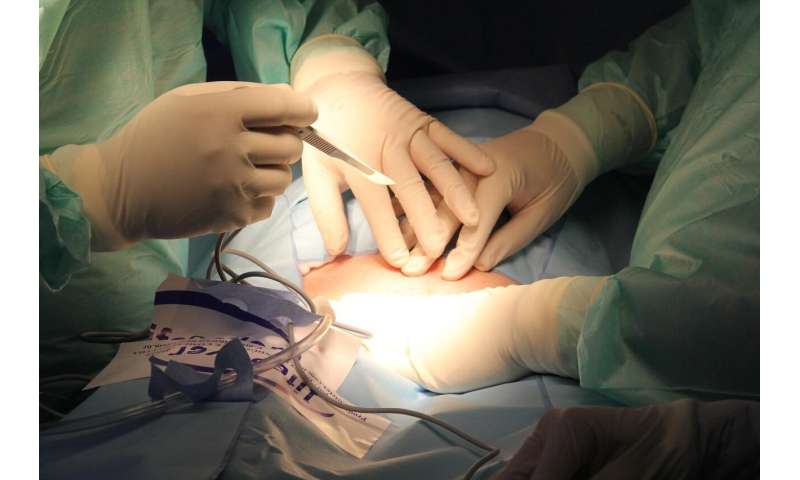Halving the risk of infection following surgery


Surgeons could dramatically reduce the risk of infection after an operation by simply changing the antiseptic they use.
New analysis by the University of Leeds and the University of Bern of more than 14,000 operations has found that using alcoholic chlorhexidine gluconate (CHG) halves the risk of infection in certain types of surgery when compared to the more commonly used povidone-iodine (PVI).
Infection after surgery could result in a range of issues including readmission to hospital and possibly further surgery.
Switching antiseptics to help tackle infections would be a simple process for healthcare providers, and could be rolled out globally, according to the new research, published in the Annals of Surgery.
Lead author Ryckie Wade, Clinical Research Fellow at Leeds’ School of Medicine said: “Infection is the most common and costly complication of surgery.
“Even though the risk of infection in these types of surgery is low (about 3%), anything we can change to reduce this risk is very important.
“Our findings suggest that the number of infections may be halved if surgeons used a different skin cleaning agent before surgery.”
The team reviewed 17 existing studies, comparing infection complications of five different antiseptics used in 14,593 operations.
The initial research was carried out in North America, Europe, Asia, South America, and Australasia on patients who had undergone a range of surgical procedures including orthopedic, cardiac, plastic and burn reconstruction surgery, cranial neurosurgery, open inguinal hernia repair and neurosurgery.
Using a statistical technique called network meta-analysis, the team showed that CHG was safe and twice as effective in preventing infection after “clean” surgery on adults compared to PVI (alcoholic or aqueous), which has been widely used as an antiseptic since its discovery in 1955.
Clean surgery is defined as a procedure outside the respiratory, urogenital and digestive system where there is no inflammation or infection and where the wound is not caused by a trauma.
Source: Read Full Article




